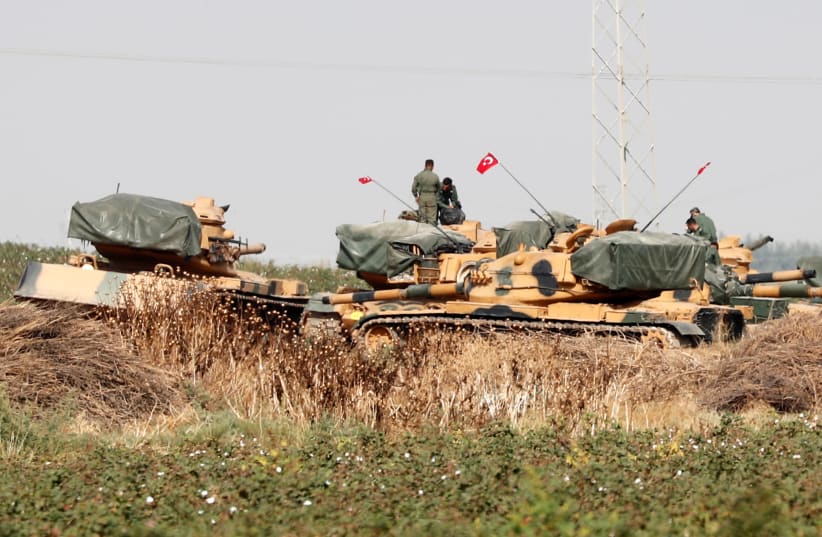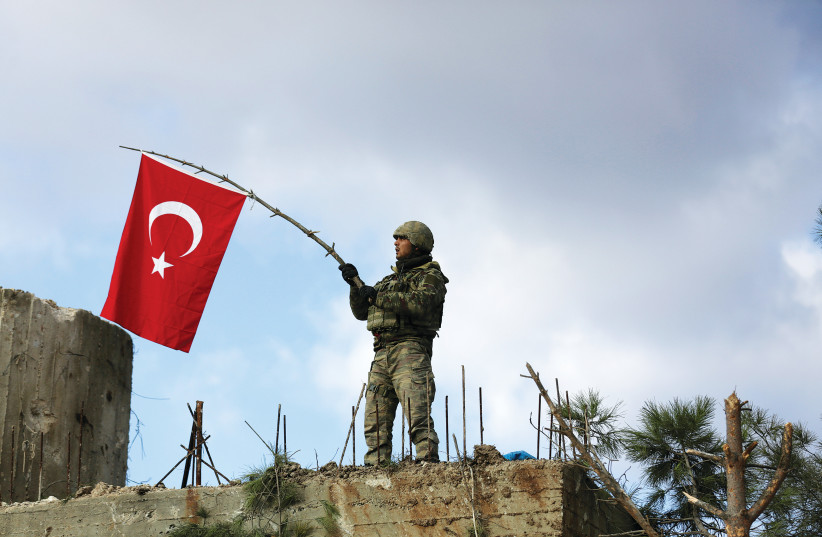Turkey is gearing up for a new invasion of Syria and possibly expanded campaigns in Iraq, claiming it is a fight against terrorism. A recent bombing in Ankara was blamed on Kurdish groups in Syria, but it appears Ankara arrested a perpetrator who is not linked to any Kurdish group.
Ankara’s threats are not new. It has been threatening and carrying out invasions of Syria, often targeting Kurdish areas, routinely since 2016. Turkey’s policy in Syria is not just about attacking Kurds; it is also about reducing the US’s role in Syria.
That means Ankara’s real conflict is partly with the US and that Washington is the only powerful country that might reasonably prevent another Turkish invasion. History shows Ankara has been demanding to invade and destroy Kurdish areas of Syria since 2016, and the US generally has been able to slow down or prevent these invasions.
Turkey's historic invasions of Kurdish areas of Syria
After the Syrian civil war began in 2011, both the US and Turkey, along with Russia and Iran, played a role in Syria. Iran and Russia backed the regime, while the US and Turkey backed the Syrian rebels.
In 2014, however, the Syrian rebels were so chaotic that extremist groups transited Turkey and began joining ISIS and al-Qaeda-linked groups. ISIS ostensibly was an Iraqi-based extremist organization, but it moved into Syria and then back to Iraq, conquering a swath of both countries and carrying out genocide against the Yazidis.
ISIS also laid siege to Kurdish areas, and the US intervened with a bombing campaign and special forces, designed to slow the ISIS advance.
In Iraq, the US worked with the Iraqi government and the Kurdistan Regional Government. In Syria, the US found partners among Kurdish fighters, who were often from the People’s Protection Units (YPG).
The US wanted a coalition force against ISIS, so it helped back the YPG to expand beyond just Kurds and create the Syrian Democratic Forces (SDF) in 2015. By then, Russia had intervened to help the Syrian regime, and the rebels were retreating.
The US had also shifted from considering airstrikes to drawing down support for the rebels. By 2016, the SDF was pushing ISIS back, but Turkey was not pleased. Ankara had enabled extremists to transit to Syria, and seeing ISIS defeated concerned Ankara.
Turkey was fighting the PKK in 2015 inside Turkey, and in 2016, Ankara decided it would expand its war into Syria, claiming that the YPG was part of the PKK.
In 2016, Ankara invaded Jarabulus, near Manbij, to stop the SDF advance, and it opposed the US role in Syria. When president Donald Trump came into office, Turkey pressured the US to leave Syria and let Ankara take over the ISIS capital of Raqqa. The US didn’t agree.
By 2017, Turkey shifted its focus to work with Russia and Iran to partition Syria. Turkey would take over Idlib, where al-Qaeda-linked HTS was prominent, and Turkey would shift the Syrian rebels into a proxy force called the SNA to fight Kurds, rather than the regime.
THE BARGAIN Ankara offered Syria was that in exchange for letting the regime take certain areas, it would move the rebels to fight Kurds in Afrin, and the regime and Russia would open the border area to Turkish airstrikes on the YPG and SDF. Russia and the regime offered to stop the airstrikes if the SDF switched sides and worked with the regime and not the US. The SDF said it wouldn’t.
From that moment, Turkey began planning the invasion of Afrin and then Serekaniye. Working with the Trump administration, Ankara got the green light for Afrin, and 150,000 Kurds were driven from their homes. The SNA was given Afrin, a kind of mafia-run mini-state to terrorize and exploit.
HTS was given Idlib, and the remnants of ISIS, who fled Raqqa in 2017, were moved through Turkey or other parts of Syria to Idlib. US special forces would later kill the ISIS leader in the fall of 2019 in Idlib, near the Turkish border.
In 2018, after the Afrin invasion, Turkey threatened to invade eastern Syria and remove the SDF. Turkey got the US to agree to some kind of a “safe zone” along the border. The SDF removed any defensive obstacles, and Turkey did join patrols, studying the area so it could later invade.
In late 2019, Ankara pressured the US to enable an invasion of an area along the border, ethnically cleansing another 150,000 people near Serekaniye.
This created a crisis, as the US withdrew from Kobani and other border areas and Russia and the Syrian regime moved in. Ankara now had the partition of Syria it wanted, based on the Astana concept of Turkey-Iran-Russia partitioning Syria. However, the main obstacle for Iran, Turkey and Russia remained the US role in Syria.
Although the US had withdrawn forces from Kurdish towns on the border, US forces remained along the Euphrates River, working the SDF and Arab tribes to keep the area secure and keep Iran and the Syrian regime at a distance.
The SDF also continued to work with the US, but Turkey increased its use of drones to kill SDF members in eastern Syria. When the Joe Biden administration came into office, Turkey demanded a new invasion, seeking to move into Kobani, Qamishli, Tel Tamr, Tel Rifat and other areas.
This required agreement from Russia and the US, but it appears neither accepted the demands. By the spring of 2022, Russia had invaded Ukraine, and Turkey took this as a green light to invade more of Syria. Russia needs Turkey to export fuel and get around sanctions.
Ankara now appears to have used an attack in Istanbul as an excuse for another threatened invasion. Turkey carried out dozens of airstrikes, terrorizing Christians in Tel Tamr, Kurdish refugees in Tal Rifat, and also Kurds who live in Derik, Qamishli, Kobani and other areas.
Russia and the Syrian regime appear to have opened the airspace for Ankara’s attacks. Turkey’s goal now is to enable HTS to take over Afrin and use the remnants of the SNA to fight against Kurds in Tal Rifat and Manbij, Kobani and Tel Tamr.
Turkey and the Syrian regime both want the YPG and SNA neutralized fighting each other so that Turkey and the Syrian regime, backed by Russia and Iran, can swoop in and then pressure the US to leave. Ankara’s goal is to continue to attack Kurdish areas until the YPG responds, and then Turkey will blame the SDF and demand airstrikes on Hasakah and other areas deeper in Syria.
THIS PUTS the US in a difficult position. Iran is bombarding the Kurdish Region of Iraq, destabilizing another area that was key to the fight against ISIS and extremism. The US has only a small number of forces in Syria, and they are concentrated in the MERV, the Middle Euphrates River Valley. Iranian groups near Albukamal and Deir Ezzor often target US forces at Omar field, Green village and other areas near the river.
The US can’t defend these forces from Iran and also stop a Turkish invasion at the same time. It is possible that Iran and Turkey are coordinating, with Iran targeting the US to tie down US forces on the Euphrates River, Iran attacking Kurds in Iraq and Turkey then striking at northeast Syria.
The US will have to use pressure to stop a new invasion, but the war in Ukraine makes this difficult. Turkey has positioned itself as a guarantor of the Ukraine grain deal and as an energy hub for Russia. Ankara also reconciled with Israel, so it can have some influence over US-Israel ties and Palestinian issues, perhaps seeking to heat up Gaza, where both Turkey and Iran back Hamas.
This puts the US in a complex situation. The coming days and months will indicate if the US can stop another massive Turkish invasion that causes hundreds of thousands of people to flee their homes.
While Ankara claims to be fighting “terrorism,” it is the people being bombarded in Syria who are facing an invasion and are more terrified. Only the US can reduce their sense of terror.

